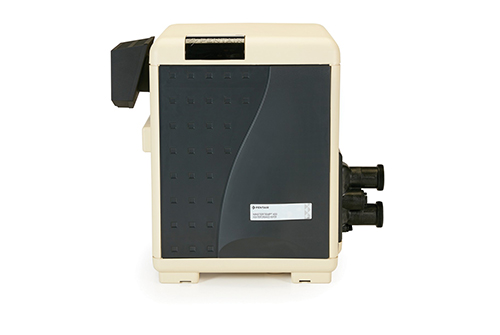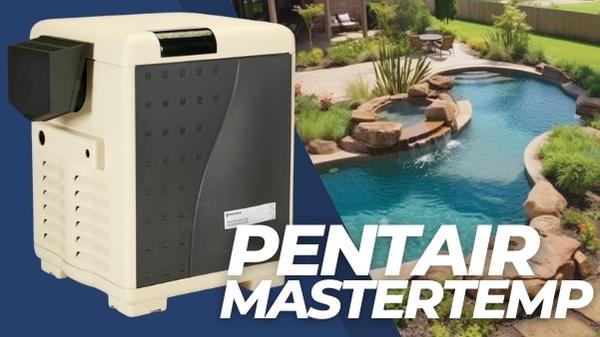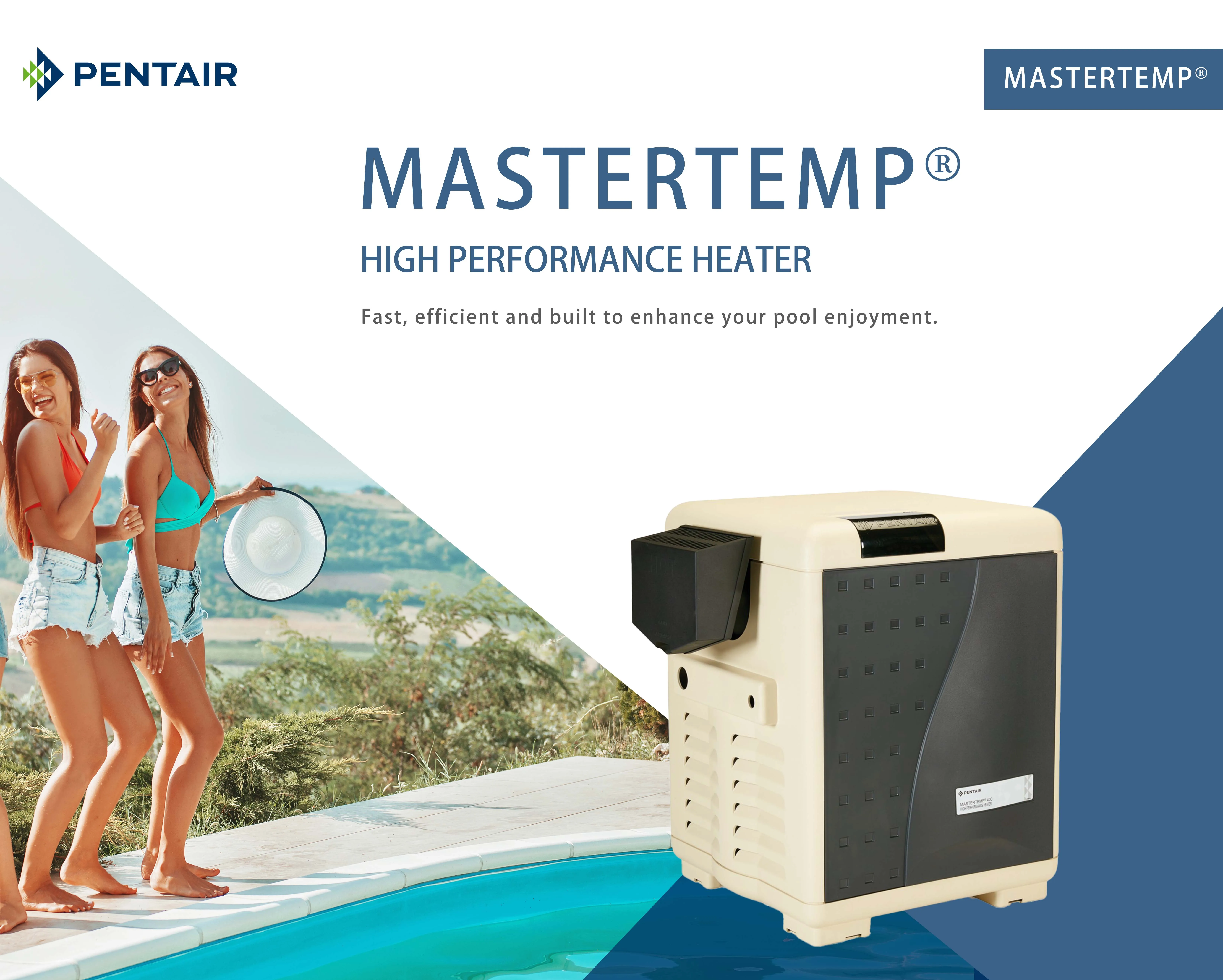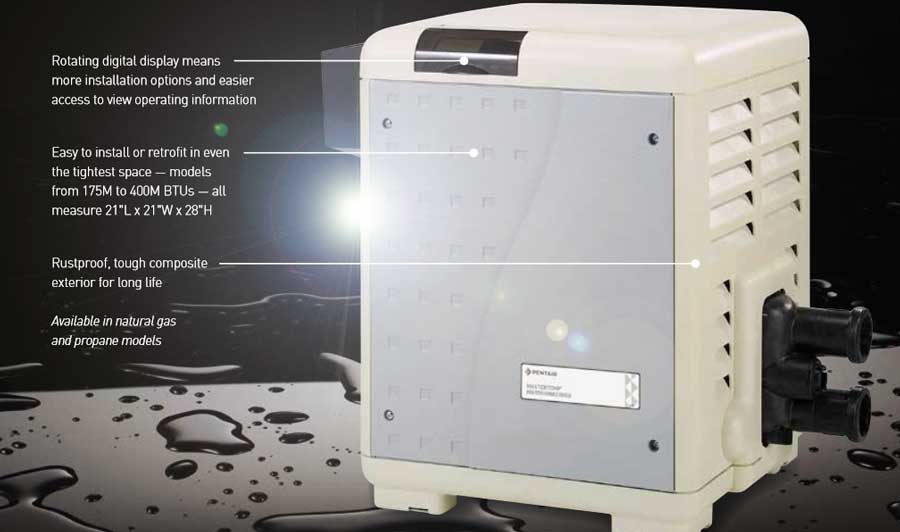Pentair Mastertemp 400 Gas Heater

Unveiling the Pentair Mastertemp 400 Gas Heater: A Comprehensive Guide
The Pentair Mastertemp 400 gas heater stands as a popular choice for pool and spa heating, offering a balance of performance, efficiency, and reliability. This article provides a detailed overview of the Mastertemp 400, covering its features, benefits, potential drawbacks, and crucial considerations for homeowners, HVAC technicians, and facility managers.
Understanding the Pentair Mastertemp 400's Core Features
At its heart, the Mastertemp 400 is a gas-fired heater designed to quickly and efficiently raise the temperature of pool or spa water. Key features include:
- High BTU Output: The "400" in its name indicates a 400,000 BTU (British Thermal Unit) input rating. BTU measures the amount of energy needed to raise one pound of water by one degree Fahrenheit. This high BTU output translates to rapid heating, even for larger pools.
- Efficient Heat Exchanger: Pentair utilizes a robust heat exchanger designed for optimal heat transfer. This minimizes energy loss and maximizes heating efficiency, reducing gas consumption.
- Digital Controls: A user-friendly digital display allows for precise temperature control and provides diagnostic information. This simplifies operation and troubleshooting.
- Durable Construction: The Mastertemp 400 features a rustproof composite exterior, resisting corrosion from pool chemicals and harsh weather conditions. This enhances its longevity.
- Compact Design: Its relatively small footprint allows for flexible installation in various equipment setups. This is particularly beneficial for homeowners with limited space.
- Certified Low NOx Emissions: Many Mastertemp 400 models are certified for low NOx (Nitrogen Oxides) emissions, complying with stringent air quality regulations. This makes it an environmentally conscious choice.
Performance and Efficiency: What to Expect
The performance of the Pentair Mastertemp 400 is directly related to several factors, including:
- Pool Size and Volume: Larger pools naturally require more energy to heat than smaller pools.
- Ambient Temperature: Lower air temperatures will increase heat loss, requiring the heater to work harder.
- Wind Exposure: Windy conditions can accelerate heat loss from the pool surface.
- Pool Cover Usage: Using a pool cover significantly reduces heat loss, improving efficiency and reducing heating costs.
In practical terms, a Mastertemp 400 can typically raise the temperature of a 15,000-gallon pool by 1-2 degrees Fahrenheit per hour under average conditions. Using a pool cover can reduce heating time and gas consumption by as much as 50%. For example, a homeowner in Southern California using a pool cover might only need to run the heater for a few hours a day to maintain a comfortable temperature, whereas someone in a colder climate without a cover might need to run it much longer.
Efficiency Ratings: While not explicitly labeled with an Energy Star rating (as pool heaters are not currently included in the Energy Star program), the Mastertemp 400 boasts a thermal efficiency rating of around 82%. This means that 82% of the energy consumed by the heater is transferred to the water, with the remaining 18% lost as exhaust. This is a reasonably good efficiency rating for gas-fired pool heaters.
Installation Considerations for HVAC Technicians and Homeowners
Proper installation is crucial for ensuring the safe and efficient operation of the Mastertemp 400. Key considerations include:
- Gas Line Sizing: The gas line must be adequately sized to provide the required gas flow to the heater. Consult the installation manual for specific requirements. Incorrect gas line sizing can lead to insufficient heating and potential safety hazards.
- Venting: Proper venting is essential to remove exhaust gases safely. The venting system must be installed according to local codes and manufacturer's instructions. Blocked or improperly installed vents can lead to carbon monoxide buildup.
- Plumbing Connections: All plumbing connections must be watertight to prevent leaks and ensure proper water flow. Use appropriate fittings and sealant to avoid leaks.
- Electrical Connections: The heater requires a dedicated electrical circuit with proper grounding. Ensure that all electrical connections are made by a qualified electrician.
- Clearance Requirements: Maintain adequate clearance around the heater for ventilation and servicing. Refer to the installation manual for specific clearance requirements.
- Water Chemistry: Maintaining proper pool water chemistry is essential for protecting the heater's heat exchanger from corrosion. Regularly test and adjust pH, alkalinity, and calcium hardness levels.
Best Practices for Technicians: When installing a Mastertemp 400, it's crucial to pressure test the gas line, check the gas pressure at the manifold, and verify the proper operation of all safety controls. Use a combustion analyzer to ensure the heater is operating efficiently and safely. Properly commissioning the unit will extend its lifespan and ensure optimal performance.
Potential Drawbacks and Troubleshooting
While the Pentair Mastertemp 400 is generally reliable, some potential drawbacks and common issues may arise:
- Higher Operating Costs: Gas-fired heaters can be more expensive to operate than heat pumps, especially in areas with high gas prices.
- Scale Buildup: Hard water can cause scale buildup on the heat exchanger, reducing efficiency and potentially leading to failure. Regular cleaning or the use of a water softener may be necessary.
- Ignition Problems: Issues with the igniter, gas valve, or flame sensor can prevent the heater from igniting. These components may need to be cleaned or replaced.
- Error Codes: The digital display will show error codes to indicate specific problems. Consult the owner's manual for troubleshooting information.
- Noise Level: Some users may find the heater's operation somewhat noisy, particularly during startup.
Troubleshooting Tips: Common issues like ignition failure can often be resolved by cleaning the flame sensor or igniter. Checking the gas pressure and ensuring proper venting are also crucial. For more complex problems, consult a qualified HVAC technician.
Cost Analysis: Purchase, Installation, and Operation
The total cost of owning a Pentair Mastertemp 400 includes the initial purchase price, installation costs, and ongoing operating expenses.
- Purchase Price: The heater itself typically costs between $2,500 and $3,500, depending on the vendor and any applicable rebates.
- Installation Costs: Installation costs can vary widely depending on the complexity of the installation. A straightforward replacement might cost $500 to $1,000, while a new installation requiring gas line and electrical work could cost $1,500 or more.
- Operating Costs: Operating costs are primarily determined by gas prices and the amount of time the heater is used. A rough estimate is that running a 400,000 BTU heater for one hour will consume approximately 4 therms of natural gas. At a price of $1.50 per therm, this would cost $6 per hour.
Comparing Costs: Compared to electric heat pumps, the Mastertemp 400 generally has a lower initial purchase price but higher operating costs, especially in areas with mild climates where heat pumps can operate efficiently year-round. Over the long term, a heat pump may be more cost-effective, but the Mastertemp 400 offers faster heating and is less affected by cold temperatures.
Lifespan and Maintenance
With proper maintenance, the Pentair Mastertemp 400 can last for 10-15 years or even longer. Regular maintenance includes:
- Cleaning the Heat Exchanger: Periodically cleaning the heat exchanger to remove scale and debris.
- Inspecting and Cleaning the Burners: Ensuring the burners are clean and free of obstructions.
- Checking the Venting System: Inspecting the venting system for blockages or leaks.
- Monitoring Water Chemistry: Maintaining proper pool water chemistry to prevent corrosion.
- Professional Service: Having the heater professionally serviced annually to identify and address potential problems.
Extending Lifespan: Regularly flushing the heat exchanger to remove scale and debris will significantly extend its lifespan. Using a pool cover to reduce heat loss will also reduce the amount of time the heater needs to run, prolonging its life.
The Pentair Mastertemp 400: Is It Right for You?
The Pentair Mastertemp 400 gas heater is a solid choice for those seeking rapid heating and reliable performance. Its high BTU output, durable construction, and user-friendly controls make it a popular option for both residential and commercial applications. However, potential drawbacks such as higher operating costs and the need for regular maintenance should be considered. By understanding its features, benefits, and limitations, homeowners, HVAC technicians, and facility managers can make an informed decision about whether the Mastertemp 400 is the right heating solution for their needs.
Final Recommendation: If fast heating is a priority and gas prices are reasonable in your area, the Mastertemp 400 is an excellent option. If energy efficiency and lower operating costs are paramount, a heat pump might be a better choice.










